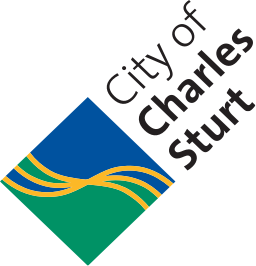Overview
The City of Charles Sturt is a progressive authority that led the way in e-waste management in South Australia. Their awareness and collection programs were generating substantial volumes of e-waste from the surrounding community. A solution was needed to streamline the processing of e-waste collections and to gain more insight into the origin of this waste for greater visibility and more effective planning. The City engaged Mandalay Technologies for assistance, which then helped them achieve their objectives.
Background
The City is situated west of the Central Business District of Adelaide, South Australia extending to the coast with a population of approximately 105,000.
People choose to live in the City because it is close to the beach, the CBD, the airport and regional shopping facilities. The City of Charles Sturt is a sporting and entertainment hub, with national basketball, soccer and football stadiums, three privately owned golf courses, an international rowing course, the River Torrens Linear Park, the Adelaide Entertainment Centre, the coast and numerous highly regarded local sporting venues in the area. The City is a diverse and vibrant place to live, with over 100 different cultures and many languages spoken – where diversity and community inclusion is celebrated.
Current Situation
A priority for the City of Charles Sturt, under its environmental strategic plan, was to provide improved services and options around the management of difficult wastes, like e-waste. Electronic waste, or e-waste can include all electronic products that are no longer wanted or useful.
Computers, computer equipment, monitors and televisions are primarily what is covered in the City’s e-waste initiative. E-waste contains a high proportion of recyclable materials but can also contain various toxic materials unsuitable for landfill sites. That is why e-waste needs to be disposed of appropriately.
Compounding a need to actively address e-waste management was the fact that South Australia was the first state in Australia to ban e-waste in landfill. This policy was enacted initially on September 2012 in metropolitan Adelaide.
The City of Charles Sturt implemented an e-waste collection initiative, in 2010. Established just for residents of the City of Charles Sturt, much was learned from that program. Over 10,000 survey responses from residents indicated strongly a need for ongoing e-waste collection services.
On the 30 July 2012 the City achieved another first with e-waste when they established a federally funded e-waste ‘drop zone’ in South Australia, located at the Beverley Waste and Recycling Centre. Open to all Adelaide residents the City saw their e-waste collection increase from an average of 9 tonnes a month before the launch, to over 15 tonnes a month on average in the subsequent 12 months, then reaching a peak of 66 tonnes in the month the ‘Digital Switch’ occurred.
The challenge
The e-waste initiatives being driven by the City were a great success. But, the City needed to better understand the magnitude of the ongoing e-waste challenge. Specifically, it needed to be able to track where e-waste was coming from, in and around the council area.
National Television and Computer Recycling Scheme now covers the transportation and recycling costs around e-waste, but the City was funding the operational costs at the drop off facility. With such large volumes of e-waste being received the City felt it was important to understand where the e-waste was coming from so a strategy could be created to better manage the influx in demand over time.
Greater waste intelligence was needed to understand not only e-waste tonnages, but also location of origin and predictive trends of future demand. With this greater depth of intelligence the council could:
- Better understand what e-waste was coming from within the City bounds or from neighbouring councils,
- Determine how far residents are willing to travel to do the right thing with their e-waste,
- Establish whether more convenient e-waste facilities are being missed by residents when delivering their e-waste,
- Create a critical source of analytics to better understand the volumes and demand for e-waste recycling in the region, to determine service provision in future years.
The Solution
The City engaged Mandalay to assist them with creating greater waste intelligence to meet the objectives of the project. Mandalay has been the provider of waste management software to the City of Charles Sturt for close to 10 years. Together the organisations implemented a new data capture and governance process to ensure the right information was being captured reliably for ready analysis.
Since implementation the council has now been digitally recording the suburb of origin with each e-waste disposal, which can then be used to segment e-waste tonnages by location. With this new waste intelligence the City can achieve the following:
- Perform spatial analysis to determine e-waste hotspots and how many tonnes are originating from outside the City bounds,
- Calculate travel time catchments residents are travelling, to dispose of e-waste,
- Informatively collaborate with neighbouring councils to better manage e-waste flow by origin,
- Determine what information programs and promotions are needed around e-waste facilities not being effectively used by nearby residents,
Implementation Success
- Replacement of paper-based recording of e-waste transactions to digital
- Ensuring compliance with South Australian e-waste policy
- Actively support community plan outcomes
- Now have the intelligence to support the creation of a community information and promotion program around the network of e-waste disposal facilities, which will be targeted by geographic region.



